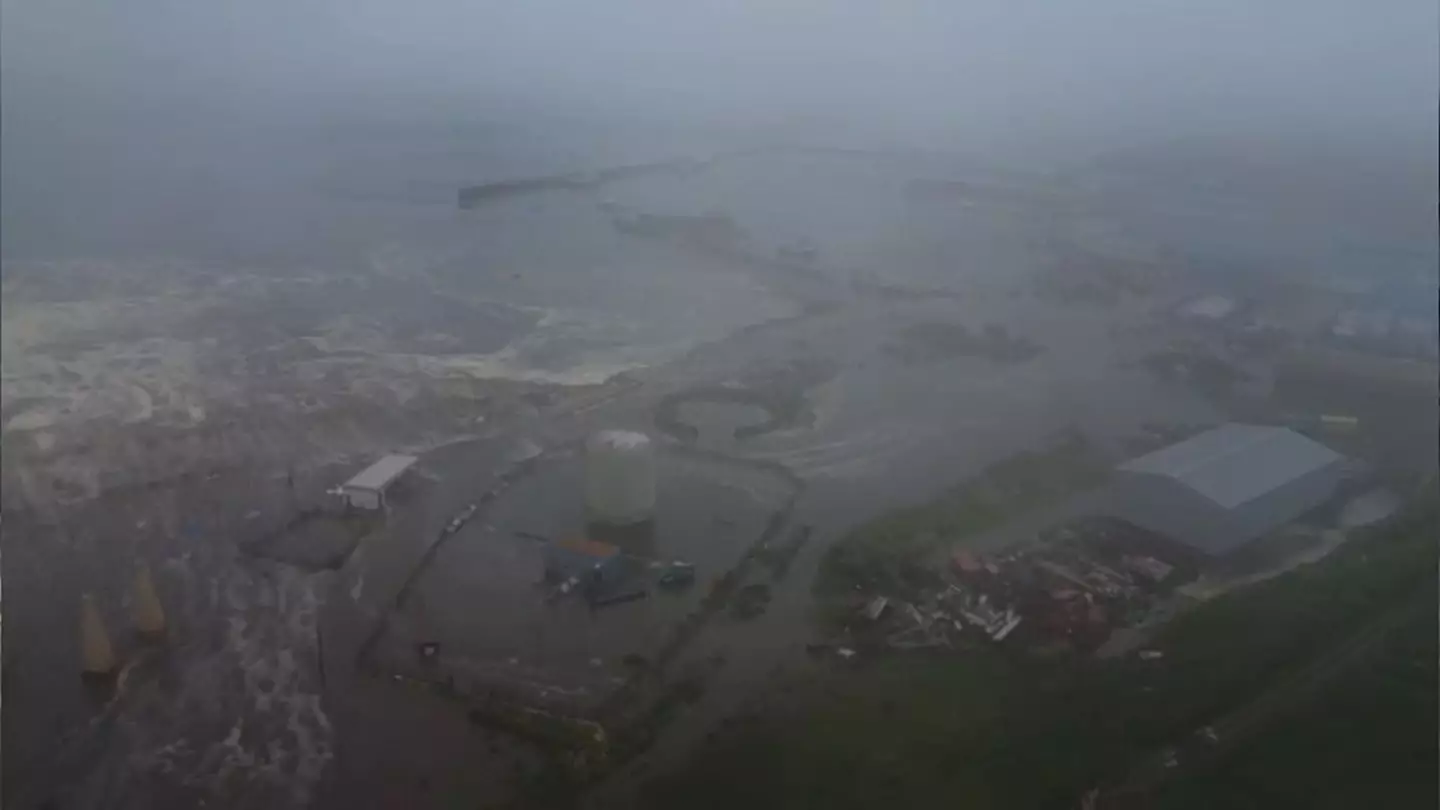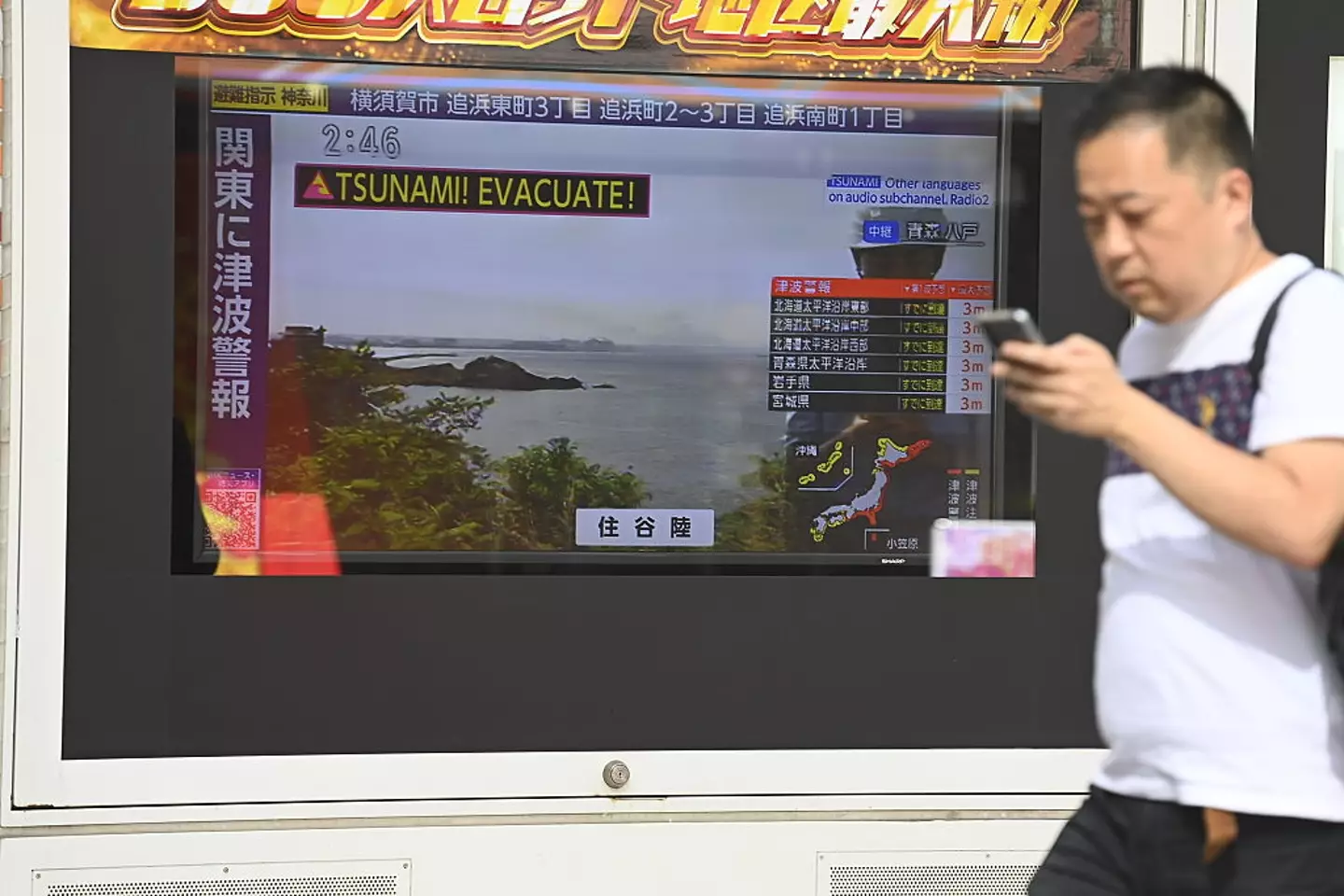After a magnitude 8.8 earthquake prompted tsunami warnings across the globe, here’s all the advice the US government has shared about staying safe.
Millions of people were urged to evacuate from coastal areas in countries including the US, Russia, Japan, the Philippines, Indonesia, Chile, Peru and Ecuador after the earthquake struck off the coast of Russia today (July 30).
The quake marked the sixth-strongest ever recorded, and within hours tsunami waves had started reaching Hawaii’s coast at heights of more than five feet.
Other areas in the US that were issued warnings after the quake include the California coast from Cape Mendocino to the Oregon border, while advisories, which is a lower alert level, were put in place for the rest of the US West Coast and Alaska’s Aleutian Islands, as well as British Columbia, Canada.


Millions of people were evacuated after the earthquake, which hit just off the coast of Russia (RUSSIAN MINISTRY OF EMERGENCY SITUATIONS/ HANDOUT)
Which areas in the US were evacuated?
Tsunami warnings sounded on multiple islands in Hawaii following the earthquake, including Oahu and Kauai.
In coastal areas, evacuation orders were carried out with the Honolulu Department of Emergency Management warning: “Take Action! Destructive tsunami waves expected.”
Officials sought to open a mountain pass as an evacuation route out of Waianae, however, the warning covering Hawaii has since been downgraded to an advisory level.
This alert means that while there is still potential of strong waves, currents and some flooding, a major tsunami is not expected to hit and those who were evacuated may return home.
At the time of writing (July 30), the US National Weather Service has said its tsunami warning remains in effect for the coastal areas from Cape Mendocino, California, to the Oregon/California border.
In a statement, it advised: “If you are located in this coastal area, move inland to higher ground. Tsunami warnings mean that a tsunami with significant inundation is possible or is already occurring. Tsunamis are a series of waves dangerous many hours after initial arrival time. The first wave may not be the largest.”


Waves of more than five feet have been reported in Hawaii (Kamchatka of Geophysical Survey/Anadolu via Getty Images)
US government advice on surviving a tsunami
As affected areas remain on alert, the US government continues to offer advice on how to stay safe amid the threat of high waves and flooding.
The government has warned that tsunamis can travel 20-30 miles per hour with waves reaching 10-100 feet high, giving them the ability to ‘kill or injure people and damage or destroy buildings’.
To help stay safe, the government advice for those under a tsunami warning is as follows:
- If caused by an earthquake, Drop, Cover, then Hold On to protect yourself from the earthquake first.
- Get to high ground as far inland as possible
- Be alert to signs of a tsunami, such as a sudden rise or draining of ocean waters.
- Listen to emergency information and alerts. Always follow the instructions from local emergency managers.
- Evacuate: DO NOT wait! Leave as soon as you see any natural signs of a tsunami or receive an official tsunami warning.
- If you are in a boat, go out to sea.
The signs of a tsunami include a loud roar from the ocean or ‘unusual’ ocean behavior, such as a sudden rise or wall of water.
When it comes to evacuation plans, the government has recommended mapping out your routes and being aware of shelters that are 100 feet or more above sea level, or at least one mile inland.


The US government has urged people to follow advice from officials (David Mareuil/Anadolu via Getty Images)
“Create a family emergency communication plan that has an out-of-state contact. Plan where to meet if you get separated,” the website says, adding: “Sign up for your community’s warning system.”
After a tsunami has hit, the government encourages people to save phone calls for emergencies and use text messages or social media to communicate with family and friends.
Avoid going into floodwater in case of dangerous debris, and be aware of the risk of electrocution from underground or downed power lines.
“Stay away from damaged buildings, roads and bridges,” it continues.
“If you become injured or sick and need medical attention, contact your healthcare provider and shelter in place, if possible. Call 9-1-1 if you are experiencing a medical emergency.”
What has Donald Trump said about the tsunami risk?
Trump issued an advisory on Truth Social following the tsunami, writing: “Due to a massive earthquake that occurred in the Pacific Ocean, a Tsunami Warning is in effect for those living in Hawaii.
“A Tsunami Watch is in effect for Alaska and the Pacific Coast of the United States. Japan is also in the way. Please visit tsunami.gov/ for the latest information. STAY STRONG AND STAY SAFE!”